|
The Pac-12 could get six teams into the tournament. Or, on the other hand ... The Pac-12 could get just two teams into the tournament. Both statements fall within the realm of possibility. You just don't see wild swings in the potential number of bids when discussing leagues like, say, the ACC or Big 12. But you do with the Pac-12; the conference is redefining bubble suspense. Here is what we think we know about the Pac-12's chances less than three weeks out from Selection Sunday: • Arizona is a lock to make the tournament. • Arizona State, with a neutral-floor victory over Xavier and a true road win at Kansas, is on track to make the field of 68 with room to spare. Past that point, however, things get interesting. 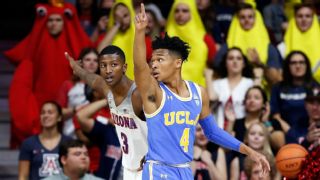 UCLA, USC and Washington are all clustered right on the cut line. It could go either way with all three of these teams. Then there's the case of Utah, which might present the most interesting example. The Utes currently appear to be a step below the Trojans, Bruins and Huskies in terms of their tournament profile. Be that as it may, Utah might be the hottest team in the league right now. The Utes have won four straight games and will be playing at home for their final three regular-season games. A 12-6 finish in Pac-12 play is a real possibility. Got all that straight? Good. Here's a rundown of the Pac-12 games that will keep the NCAA men's basketball selection committee burning the midnight oil this week: • USC at Colorado (Wednesday on FS1, 10:30 p.m. ET): The Trojans will put their tournament hopes on the line in a notoriously tough place to win. • Washington at Stanford (Thursday on Pac-12 Network, 9 p.m. ET): The Huskies had lost three in a row before rebounding with a win at home against Colorado. Now the Huskies need a victory in Palo Alto, California, where they haven't won a game since 2013. • UCLA at Utah (Thursday on ESPN, 9 p.m. ET): An all-bubble showdown. The Utes need to keep winning and defend their home floor to extend this bid conversation as long as possible. For their part, the Bruins are looking to notch a crucial Quadrant 1 win. The left coast is the place to be for edge-of-your-seat bubble drama, and the intrigue will almost certainly continue right through the Pac-12 tournament. In college basketball terms, it's just more suspenseful out West in 2018. (A reminder: Included for each bubble team is its ranking in four metrics: RPI; ESPN's strength of schedule (SOS); Basketball Power Index (BPI), which is a predictor of a team's performance going forward; and strength of record (SOR), which is a measure of a team's accomplishment based on how difficult its win-loss record is to achieve.) ACC | Big 12| Big East | Big Ten | Pac-12 | SEC | American | Others
ACC LocksVirginia (24-2, 13-1 ACC)
(BPI: 2 | SOS: 12 | SOR: 1 | RPI: 1)  Duke (22-5, 10-4 ACC)
(BPI: 4 | SOS: 18 | SOR: 5 | RPI: 4)  Clemson (20-6, 9-5 ACC)
(BPI: 15 | SOS: 28 | SOR: 11 | RPI: 9)  North Carolina (21-7, 10-5 ACC)
(BPI: 8 | SOS: 2 | SOR: 7 | RPI: 5)  Should be in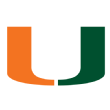 Miami (19-8, 8-7 ACC)
(BPI: 31 | SOS: 50 | SOR: 30 | RPI: 38) The Hurricanes' 77-74 win at Notre Dame qualifies as a Quadrant 1 victory, and it comes as a welcome change of direction for a team that had dropped its previous three games. Better still, Miami recorded its best game on offense in more than two weeks by ringing up 1.19 points per trip against the Fighting Irish. The Canes will get one more chance to seize the committee's attention when they pay a visit to Chapel Hill to play North Carolina on Feb. 27. A win would be a real seed-lifter, but the alternative isn't bad either. Even if they lose to the Tar Heels, the Canes still appear headed for an above-.500 finish in the ACC and a middle seed in the field of 68.
 Florida State (19-8, 8-7 ACC)
(BPI: 26 | SOS: 46 | SOR: 22 | RPI: 41) Florida State now faces something of a two-game, seed-lifting season. The Seminoles, projected as anywhere from a No. 7 seed to a No. 9, play back-to-back road games at NC State and Clemson. They're getting a late-season lift from PJ Savoy, who has returned to the rotation after missing seven games with a knee injury. In his first start since November, Savoy scored 18 points on 5 of 7 shooting from beyond the arc in an 88-75 win over Pittsburgh.  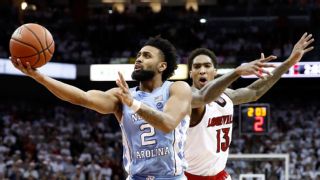 Work to do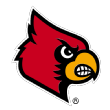 Louisville (18-9, 8-6 ACC)
(BPI: 30 | SOS: 59 | SOR: 47 | RPI: 49) Well, that was dispiriting. North Carolina came to town and laid down a 93-76 shellacking on the Cardinals. It was their largest margin of defeat at home since December 2009. On paper, this is still a very good Louisville defense, but allowing an opponent to score 93 points in a 73-possession game on your home court in mid-February isn't likely to make coach David Padgett overly confident on that account. Also, the number of at-large teams below the Cardinals in the projected bracket has been steadily shrinking. Louisville closes the season with road tests at Duke, Virginia Tech and NC State, as well as a home game against Virginia. Selection Sunday could be a tad tenser for the Cards than originally planned.
 Syracuse (18-9, 7-7 ACC)
(BPI: 50 | SOS: 58 | SOR: 48 | RPI: 37) Syracuse is in its best position yet in terms of its tournament profile. Saturday's 62-55 win at Miami gives the Orange their third Quadrant 1 victory of the year; and pending games against North Carolina, Duke and Clemson (with the Tar Heels and the Tigers coming to the Carrier Dome) represent something very close to all-upside opportunities. Frank Howard might be peaking along with his team's March hopes. The junior has scored 34 points over the past two games on 14 of 25 shooting from the floor to go along with 12 assists. (Keep in mind that counting stats such as assists are scarcer for a team like Syracuse that averages 62 possessions per game.) Like Tyus Battle and, on occasion, Oshae Brissett, Howard also is playing every minute of every game.
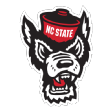 NC State (18-9, 8-6 ACC)
(BPI: 53 | SOS: 30 | SOR: 34 | RPI: 60) At a time when stretching the floor with multiple 3-point shooters is commonly agreed upon as the wise strategy, the very idea of a pass-first point guard is perhaps on the wane. Which brings us to Markell Johnson, who might be the finest pass-first point guard in the nation. In the Wolfpack's 90-84 win at Wake Forest, the 6-foot-1 sophomore recorded 10 assists and just two turnovers. Johnson has attempted just 14 percent of the shots that NC State has recorded during his minutes in ACC play, yet he is the proud owner of (by far) the league's highest per-possession assist rate. Highly skilled throwback Markell Johnson, Bubble Watch salutes you.
 Virginia Tech (19-8, 8-6 ACC)
(BPI: 28 | SOS: 52 | SOR: 28 | RPI: 54) The Hokies took care of business this weekend with a 20-point win at Georgia Tech. Now the real work begins. Virginia Tech gets the late-season gift of a three-game homestand, though the opponents aren't what you'd term chopped liver. Clemson, Louisville and Duke are coming to Blacksburg, before Virginia Tech finishes at Miami. Justin Robinson is on something of a late-season rampage, and he sliced and diced the Yellow Jackets to the tune of 18 points in just 23 minutes. In ACC play, the 6-foot-1 junior is converting 55 percent of his 2-point tries. Part of the credit there goes to Buzz Williams' system and its regularly recurring bouts of shooting accuracy, but Robinson is certainly capitalizing on his coach's scheme to great effect.  Big 12Locks Kansas (22-6, 11-4 Big 12) (BPI: 7 | SOS: 16 | SOR: 8 | RPI: 6)  Texas Tech (22-5, 10-4 Big 12)
(BPI: 9 | SOS: 49 | SOR: 9 | RPI: 11)  Should be in West Virginia (19-8, 8-6 Big 12)
(BPI: 11 | SOS: 27 | SOR: 20 | RPI: 31) When West Virginia visits Allen Fieldhouse and is put on the wrong end of a 35-2 free throw disparity, Bob Huggins is not going to be very happy about it. The funny thing is, the Mountaineers led that game by eight with under four minutes remaining, at a time when they already were on the wrong end of a 25-2 FT disparity, before falling to Kansas 77-69 in Lawrence. Bubble Watch will leave officiating controversies to the coaches and to you, the always vigilant reader. That being said, West Virginia really is putting up some striking numbers in this area across the entirety of conference play. Huggins' teams have long been known to commit a foul now and then, of course; but this season, the Mountaineers are themselves going to the line less often than any other team in Big 12 play. In other words, don't expect WVU to win its NCAA tournament games at the line.
 TCU (18-9, 6-8 Big 12)
(BPI: 19 | SOS: 14 | SOR: 24 | RPI: 22) If you're a fan of offense, TCU is the team for you. The Horned Frogs are tearing through the Big 12 at a rate of 1.15 points per possession; and most remarkably, the loss of starting point guard Jaylen Fisher to a knee injury a month ago hasn't slowed this train down one bit. Jamie Dixon's offense is fairly balanced, and maybe the lack of a clear leading-scorer type accounts for some of TCU's relative anonymity. (Vladimir Brodziansky, Kenrich Williams, Desmond Bane and Kouat Noi are all averaging between 10 to 16 points.) Nevertheless, this is the best offense in the Big 12 by a healthy margin. The Frogs' season finale at Texas Tech will pit easily the league's top offense against what is clearly its best defense. It should be quite a collision.  Work to do Oklahoma (16-11, 6-9 Big 12)
(BPI: 41 | SOS: 1 | SOR: 31 | RPI: 32) While we were busy dissecting Trae Young's workload and perimeter woes, we probably should have cast an occasional glance in the direction of the Oklahoma defense too. The Sooners did not look especially formidable, goodness knows, in allowing Kansas to drop 104 points in a 71-possession blowout win in Lawrence. On paper, the Sooners still have an NCAA tournament-level profile, with wins over USC, Wichita State (in Wichita), Texas Tech, TCU, Kansas and Baylor to their credit. The danger, however, is a Big 12 record so unsightly that even a supposedly conference-blind committee has to sit up and take notice. At just 6-9 in league play, Oklahoma would be well advised to win those remaining home games against Kansas State and Iowa State.
 Texas (16-11, 6-8 Big 12)
(BPI: 40 | SOS: 3 | SOR: 39 | RPI: 52) The Longhorns really needed that road win at Oklahoma on Saturday. A loss would have dropped them to 5-9 in the Big 12. The committee swears it doesn't consider conference affiliations and records, but the past selection history of teams that far under .500 in league play is not auspicious. Now you're looking at a Texas team that is 6-8 in the league, with home games remaining against Oklahoma State and West Virginia. Its offense still ranks No. 10 in Big 12 play, but against the Sooners, Matt Coleman and especially Dylan Osetkowski looked downright efficient. A little offense could go a long way for the Horns.
 Kansas State (19-8, 8-6 Big 12)
(BPI: 49 | SOS: 45 | SOR: 21 | RPI: 55) Bruce Weber's team is going to finish the season playing opponents a lot like, well, Bruce Weber's team. The Wildcats will close out the regular season against Texas, Oklahoma, TCU and Baylor -- all NCAA tournament aspirants, sprung from the midsection of the nation's strongest conference. Just don't expect K-State to dominate any of those opponents on the glass. Weber elects not to emphasize offensive rebounds. At the other end of the floor, the Wildcats are neck-and-neck with in-state rival Kansas for ownership of the lowest defensive rebound percentage in Big 12 play. Then again, poor production in the rebound department hasn't been an undue burden for a team that excels at making 2s and forcing opponents to commit turnovers. K-State appears headed for an above-.500 conference finish and a double-digit NCAA tournament seed.
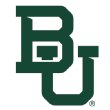 Baylor (17-10, 7-7 Big 12)
(BPI: 33 | SOS: 8 | SOR: 36 | RPI: 46) Wins at home over Kansas and Texas Tech during a five-game winning streak have lifted the Bears up to "last four in" status on Joe Lunardi's projected bracket. Can Scott Drew's team stay in the field with the games it has left? Absolutely. The nice thing about membership in the Big 12, after all, is a steady diet of NCAA tournament-level opponents. Baylor wraps up the regular season with games against West Virginia, TCU, Oklahoma and Kansas State. The Bears could enter the Big 12 tournament as anything from a relatively safe at-large bet to a long shot, depending on the outcomes of those four games. Stay tuned.  Big EastLocks Villanova (24-3, 11-3 Big East)
(BPI: 1 | SOS: 40 | SOR: 4 | RPI: 2)  Xavier (24-4, 12-3 Big East)
(BPI: 13 | SOS: 19 | SOR: 2 | RPI: 3)  Should be in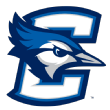 Creighton (19-8, 8-6 Big East)
(BPI: 18 | SOS: 54 | SOR: 33 | RPI: 34) Greg McDermott has plenty to chew on after seeing a previously good Bluejays defense give up 90 points to Marquette in a 68-possession loss at home. Maybe he can live with the Golden Eagles making 11 3s (the same number that Creighton drained in its own right), but Marquette went 25-of-39 inside the arc. The Bluejays will want to get any defensive issues ironed out in short order, because the remaining schedule is no picnic. Next up is a visit to Butler, followed by home games against Villanova and DePaul and the season finale at Marquette.
 Seton Hall (18-9, 7-7 Big East)
(BPI: 38 | SOS: 31 | SOR: 35 | RPI: 24) Any team with a neutral-floor win over Texas Tech and a true road win at Louisville is going to feel justifiably good about its tournament profile. True enough. At the same time, it's also true that Seton Hall could see its remaining schedule as equal parts rewarding and forbidding. It's all Quadrant 1 contests from here on out for the Pirates, as they wrap up with road tests at Providence and St. John's, followed by home games against Villanova and Butler. A 3-1 finish would likely lift this team's seed significantly.
 Butler (18-10, 8-7 Big East)
(BPI: 27 | SOS: 20 | SOR: 37 | RPI: 39) In its win at home against Providence, Butler's defense recorded one of the Bulldogs' better games of the Big East season, holding the Friars to 54 points in a 67-possession game, thanks primarily to excellent field goal defense on both sides of the arc. First-year head coach LaVall Jordan has extended the Butler tradition of putting opponents at a relative disadvantage in terms of turnovers. Only Villanova has given the ball away on a smaller percentage of its possessions than the Bulldogs in Big East play, and a featured scorer such as Kelan Martin derives a good deal of his effectiveness from the fact that he takes very good care of the rock.  Work to do Providence (17-10, 8-6 Big East)
(BPI: 76 | SOS: 32 | SOR: 46 | RPI: 35) The Friars might end up being the lowest-seeded Big East representative in the NCAA tournament, but unlike just about every other league covered by Bubble Watch, that doesn't mean their tournament chances are in peril. For the moment, there are a good many at-large teams projected to make the field of 68 after Providence hears its name called. Fun fact: Ed Cooley's teams at Providence have never allowed opponents to record a season percentage higher than 33.8 from 3-point range. Has Cooley discovered the secret to 3-point accuracy defense? Good question! More specifically, important question. Bad 3-point shooting by opponents is the strength of this team's defense which, in turn, is the strength of the team overall.
 Marquette (15-11, 6-8 Big East)
(BPI: 48 | SOS: 5 | SOR: 49 | RPI: 57) The Golden Eagles played their way back into this conversation by winning at Creighton. To stick around for a while, they will have to do some grunt work outside of Quadrant 1, with a home game against St. John's and road tests at DePaul and Georgetown. Give Marquette credit. On paper, this is not a defense that one would expect to accompany a team pushing its way into the bubble conversation. Remarkably, six of the team's past seven opponents have scored 1.15 points per possession or better. Nevertheless, the Golden Eagles are at least raising the bubble question, thanks to some good offense and large helpings of great 3-point shooting.  Big Ten LocksMichigan State (26-3, 14-2 Big Ten)
(BPI: 5 | SOS: 56 | SOR: 3 | RPI: 14)  Purdue (24-5, 13-3 Big Ten)
(BPI: 3 | SOS: 33 | SOR: 6 | RPI: 12)  Ohio State (22-7, 13-3 Big Ten)
(BPI: 17 | SOS: 38 | SOR: 13 | RPI: 20)  Should be in Michigan (22-7, 11-5 Big Ten)
(BPI: 24 | SOS: 55 | SOR: 15 | RPI: 29) After the Wolverines recorded a profile-elevating win by holding Ohio State to just 62 points in a 66-possession game, one question must be asked: Is it high time to give John Beilein his due as a defensive mastermind? Just look at the facts. The Michigan defense does two things, and it does them quite well. It restricts the number of 3s that opposing teams attempt. Second, it's an excellent defensive rebounding team. Imposing a strict one-shot limit on your opponents and making most of those shots 2s is a pretty good way to hold points to a minimum, even if your rim defense is merely average. If this keeps up, Beilein will start scowling and wearing a hoodie.  Work to do Nebraska (20-9, 11-5 Big Ten)
(BPI: 61 | SOS: 56 | SOR: 38 | RPI: 62) For a team that has been sitting among the "first four out" in Lunardi's projections, losing to Illinois on the road is not ideal. The Cornhuskers are unlikely to improve upon that standing until they get a shot at an opponent such as Ohio State, Purdue or Michigan State in the Big Ten tournament.
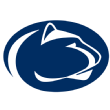 Penn State (19-10, 9-7 Big Ten)
(BPI: 25 | SOS: 62 | SOR: 60 | RPI: 77) A 76-73 loss to Purdue represents a missed opportunity (bearing in mind the Boilermakers played the game without Vincent Edwards). Suddenly, what once looked like a rather mundane season finale at Nebraska takes on new importance. Playing the Cornhuskers in Lincoln will qualify as a Quadrant 1 opportunity for a Nittany Lions team grasping at every chance to make its case to the committee.  Pac-12Locks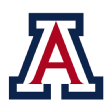 Arizona (21-6, 11-3 Pac-12)
(BPI: 23 | SOS: 67 | SOR: 23 | RPI: 17)  Should be in Arizona State (19-7, 7-7 Pac-12)
(BPI: 42 | SOS: 74 | SOR: 45 | RPI: 28) There has been no change in status since Bubble Watch last checked in on the Sun Devils, who haven't played since a home loss to Arizona on Feb. 15. Maybe Bobby Hurley is using that free time to conjure up ways of getting the ball in the basket. Among the Pac-12's contingent of tournament hopefuls, ASU and Washington stand out as the two teams that have not shot very well in conference play. The Huskies, of course, have a rather vaunted zone defense to fall back on; but in the case of the Sun Devils, offense is supposed to be their thing. Offense could be their thing (their turnover rate is the lowest in the league), if they could do just a little better than 49 percent on their 2s and 34 percent on their 3s.  Work to do Washington (18-9, 8-6 Pac-12)
(BPI: 114 | SOS: 80 | SOR: 69 | RPI: 47) Lunardi's "first four out" has a distinctly Pac-12 flavor, with Washington, USC and UCLA residing there. Two points bear repeating in the case of Washington: Not many observers expected Mike Hopkins' guys to come this far this fast; and the Huskies have a good shot at taking this at-large question to the Pac-12 tournament. Washington finishes with road contests at Stanford and Cal and home games against Oregon State and Oregon. Going 3-1 against them won't be easy, certainly, but it wouldn't exactly be a moon shot either. That would put the Huskies at 21-10 and 11-7 heading into a Pac-12 tournament, during which just about every team will want a shot at Arizona to impress the committee. Washington is very much alive.
 USC (19-9, 10-5 Pac-12)
(BPI: 51 | SOS: 81 | SOR: 65 | RPI: 42) The Trojans are outside the projected field by the slimmest of margins for the moment, and road games at Colorado and Utah await. The Buffaloes have beaten Arizona and Arizona State at home this season. As for the Utes, they're also fighting for their tournament lives. It has been a month since either Colorado or Utah lost at home. So yes, USC has its work cut out for it to secure that bid, and the news that Bennie Boatwright has been lost for the season is not helping matters. If there's a silver lining, however, it's that Elijah Stewart is coming off possibly his best game of the season, scoring 28 points in a win over Oregon State. The senior's ability to hit shots from both sides of the arc could give the Trojans a lift.
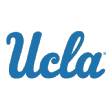 UCLA (19-8, 10-5 Pac-12)
(BPI: 59 | SOS: 73 | SOR: 55 | RPI: 48) There is no justice in brackets. UCLA took care of business by beating Oregon State and Oregon at home. However, that is not going to shift the Bruins much along the cut line. There's still time for the Bruins to play their way into the field. A 2-0 road swing against Utah and Colorado might be too much to hope for, but one win, plus a victory in the season finale at USC, would most certainly keep this conversation going. Don't count out a team that has Aaron Holiday, he of the 29-point and six-assist effort against the Ducks.
 Utah (17-9, 9-6 Pac-12)
(BPI: 70 | SOS: 65 | SOR: 62 | RPI: 50) The Utes have played their way back into the conversation after four consecutive wins. And with their final three regular-season games being played at home, they have a good chance of finishing Pac-12 play with a 12-6 record. Justin Bibbins has been superb during this streak. The 5-foot-8 graduate transfer from Long Beach State scored 24 points to go along with four assists in the Utes' 77-70 win at Washington State.  SECLocks Auburn (23-4, 11-3 SEC) (BPI: 14 | SOS: 64 | SOR: 10 | RPI: 8)  Tennessee (19-7, 9-5 SEC)
(BPI: 16 | SOS: 6 | SOR: 14 | RPI: 15) 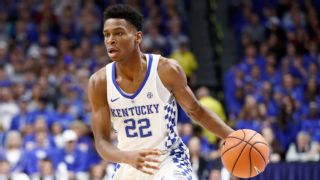  Should be in Kentucky (18-9, 7-7 SEC)
(BPI: 36 | SOS: 11 | SOR: 25 | RPI: 18) Well done, Wildcats: A four-game losing streak is now history. More important is that they looked a bit like a garden-variety John Calipari-coached Kentucky team in their win at home against Alabama. This team won't go down in the books as the best defense Calipari has had in Lexington, nor will it set any standards in terms of shooting accuracy. But one avenue that would figure to be open to a young group of elite players is offensive rebounding. Sure enough, the Wildcats had their best outing of the SEC season on the offensive glass against the Crimson Tide. At this rate, Kentucky might pass league leaders Texas A&M and Georgia and resume its customary spot at No. 1 in the conference in offensive rebound percentage.
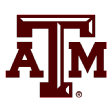 Texas A&M (17-10, 6-8 SEC)
(BPI: 39 | SOS: 4 | SOR: 29 | RPI: 21) It's not terribly surprising that the Aggies lost back-to-back road games at Missouri and Arkansas. But one question going forward will be whether they can get back to the level of performance recorded during their four-game winning streak spanning January and early February. Take those four wins out of Texas A&M's record book and you're looking at an offense that has been reliably below average in SEC play, as was the case in Columbia and Fayetteville. Obviously, any team with a neutral-floor win over West Virginia and true road wins over USC and Auburn is going to get a nice seed. Make no mistake, if the early-February version of Texas A&M resurfaces, this group will be very dangerous playing from that nice seed line.
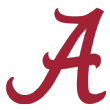 Alabama (17-10, 8-6 SEC)
(BPI: 45 | SOS: 41 | SOR: 53 | RPI: 33) Bubble Watch is not going to scold a program that hasn't won at Rupp Arena since 2006 for losing at Rupp Arena in 2018. Nevertheless, the manner in which that defeat at Kentucky happened will at least give Avery Johnson a talking point with his team going forward. Specifically, the Wildcats rebounded a whopping 53 percent of their missed shots against the Crimson Tide. That (plus free throws) made the difference on an afternoon when Alabama actually shot better from the field than did the host team. On the SEC season as a whole, the Tide fall below the league average in terms of defensive rebound percentage. It is the one question mark attached to an otherwise outstanding defense.
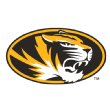 Missouri (18-9, 8-6 SEC)
(BPI: 44 | SOS: 47 | SOR: 42 | RPI: 23) If you like suspense, Missouri is your team. The Tigers have played six consecutive games decided by single digits, the past four of which were in doubt into the 40th minute. Unfortunately for Cuonzo Martin's team, however, Missouri's run of close-game excellence came to an end, as the Tigers fell at LSU 64-63 on Saturday, ending a five-game winning streak. It's a good time to look at the big picture for Mizzou. If you had told anyone in the preseason that Michael Porter Jr. would play just two minutes this season, but that the Tigers would still go out and record an at-large profile good enough for a no-brainer middle seed, I suspect that person would have been surprised. On this date one year ago, Missouri was 2-12 in SEC play. Times are good in Columbia.
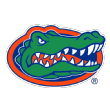 Florida (17-10, 8-6 SEC)
(BPI: 34 | SOS: 23 | SOR: 43 | RPI: 59) The Gators have now dropped two straight close games. The overtime loss at home to Georgia was a rock fight, while the road defeat at Vanderbilt was a shootout. So Bubble Watch isn't sure pointing a withering finger of blame at either the Florida offense or defense is entirely consistent with recent events. It is instead more likely that Florida is simply a slightly above-average team in an unusually strong SEC. You'd expect such a team in such a league to play close games, and the Gators are meeting that expectation. It is probable that we're going to see more of the same the rest of the way. Florida closes with games against Tennessee, Auburn, Alabama and Kentucky. Don't be surprised if most of those contests go down to the wire.  Work to do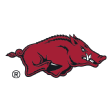 Arkansas (19-8, 8-6 SEC)
(BPI: 37 | SOS: 52 | SOR: 32 | RPI: 25) Reasonable observers can differ, but a 19-point win at home against Texas A&M might rank as the Razorbacks' most impressive win yet. They've now won four straight games and are solidly in the field heading into the season's final weeks. Better defense has made the difference. Arkansas has held its past four opponents to just 0.90 points per possession, and opposing offenses have been notably unsuccessful at converting their 2-point tries over that span. The Razorbacks have an ideal opportunity to strut this same stuff against an SEC who's who of tournament-level opponents. They close the regular season against Kentucky, Alabama, Auburn and Missouri.
 Georgia (15-11, 6-8 SEC)
(BPI: 83 | SOS: 15 | SOR: 57 | RPI: 64) Wins at Florida and at home against Tennessee gave Georgia a near-ideal bubble week, ending a stretch of six losses in seven games. The Dawgs' newfound bubble status sets up a suddenly important showdown at South Carolina, which is coming off a home win over Auburn. Points are -- how shall Bubble Watch say this? -- likely to be at a premium when the SEC's Nos. 13- and 14-ranked per-possession offenses collide. Prepare for a tense and highly consequential rock fight.  AmericanLocks Cincinnati (23-4, 12-2 AAC) (BPI: 6 | SOS: 77 | SOR: 12 | RPI: 13)  Wichita State (21-5, 11-3 AAC)
(BPI: 10 | SOS: 71 | SOR: 19 | RPI: 16)  Should be in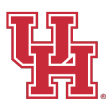 Houston (21-5, 11-3 AAC)
(BPI: 22 | SOS: 66 | SOR: 17 | RPI: 19) There's a case to be made that Houston is the best team in the American right now. The Cougars beat Cincinnati at home. Then they traveled to face a Temple team trying to play its way into a bid; the result was an 80-59 win in Philadelphia. With the Cincinnati's (relative) struggles on defense against both Houston and Wichita State, the Cougars are now the proud owners of the best interior defense in American play. Opponents have converted just 41 percent of their 2s. And Corey Davis Jr. is currently enjoying a 10 of 13 streak on his 3s in his past two games. This is going to be a tough team to beat come March. It has been a tough team to beat for the past month or more.  Work to do Temple (15-12, 7-8 AAC)
(BPI: 84 | SOS: 22 | SOR: 68 | RPI: 40) The Owls were crushed like a paper cup on their home floor by Houston, and they are now 7-8 in American play. Yet Temple still is showing up here at Bubble Watch. What gives? This still is a profile that could prompt discussion, with wins over Auburn, Clemson and Wichita State. Those three games alone won't get the job done -- there's a reason the Owls have dropped off the "next four out" list -- but those victories are a worthy foundation for additional construction. Alas, any future committee-impressing work is going to have to take place in the American tournament. The Owls close the regular season with games against UCF, Connecticut and Tulsa.  OthersLocks Gonzaga (25-4, 15-1 WCC)
(BPI: 12 | SOS: 117 | SOR: 16 | RPI: 45)  Rhode Island (21-4, 13-1 A-10)
(BPI: 26 | SOS: 87 | SOR: 18 | RPI: 7)  Should be in Saint Mary's (25-4, 14-2 WCC)
(BPI: 20 | SOS: 222 | SOR: 40 | RPI: 36) The Gaels rebounded from their loss at San Francisco by winning at Portland 73-61. Bubble Watch doesn't want to jump to conclusions and count games before they're played, but let us just say it will not be a shocking turn of events if they win out and close the regular season at 27-4 and 16-2. Those are highly impressive numbers, certainly, but present-tense Saint Mary's looks a bit shaky. Keep in mind that for most of the season, Jock Landale was rolling along as a 2-point hegemon who, for combined volume and accuracy, could look down his dominant nose at the likes of Deandre Ayton and Marvin Bagley III. But Gonzaga appeared to steal Landale's soul by limiting the senior to four shot attempts in a Zags win on Feb. 10. Over the past two games, he has been hitting 2s at a mere 50 percent rate. Saint Mary's needs pre-Gonzaga Landale.
 Nevada (23-5, 12-2 MWC)
(BPI: 21 | SOS: 99 | SOR: 27 | RPI: 10) Nevada is beginning to look somewhat juggernaut-ish. It might not have made many headlines, but a Mountain West road trip consisting of games at Boise State and Utah State is no easy assignment. The Wolf Pack returned from that trip with a 2-0 record. Well done. Road tests still await at UNLV and San Diego State to close the season, but Nevada is rubbing seed-line shoulders with the likes of Florida State, Arizona State and Seton Hall in the projected brackets. Improving that seed significantly might be difficult, but falling out of a No. 8 or 9 seed to something more like a No. 10 would not be the worst fate that can happen to a team, with respect to its potential opponent in the round of 32.  Work to do Boise State (21-6, 11-4 MWC)
(BPI: 57 | SOS: 118 | SOR: 52 | RPI: 53) The Broncos are, for now, marooned in a tough selection spot. To put it plainly, there are no Quadrant 1 opportunities left on their schedule. Naturally, a neutral-floor meeting with Nevada in the Mountain West tournament would qualify for that status, but no other game will. Right now, Boise State's profile is close to being good enough to get an at-large. But the Broncos can only improve a résumé that is lacking in several bubble aspects with a win over Nevada. Such a meeting might occur only in the MWC tournament title game.
 Middle Tennessee (22-5, 14-1 C-USA)
(BPI: 46 | SOS: 93 | SOR: 26 | RPI: 26) Middle Tennessee finishes the season with a three-game homestand against UAB, Western Kentucky and Marshall, and it should be noted that the Thundering Herd are the only Conference USA team to beat the Blue Raiders. What if disaster strikes and Middle Tennessee loses in the C-USA tournament? Can this team win an at-large bid? It could happen. A shrewd nonconference schedule and a road win at Western Kentucky will serve it well in the committee room if it comes to that.
 St. Bonaventure (20-6, 10-4 A-10)
(BPI: 54 | SOS: 86 | SOR: 41 | RPI: 27) Sometimes the schedule gives you exactly what you need. The Bonnies got a home game against a Rhode Island team that might be the best team the Atlantic 10 has produced in two years, and St. Bonaventure picked up the victory 77-74. Matt Mobley hit five 3s and scored 26 points to go along with nine rebounds. Mobley, Jaylen Adams and Courtney Stockard all played the full 40 minutes in what was, in effect, an NCAA tournament play-in game for the Bonnies, who have an excellent shot at their first bid since 2012. Previous Bubble Watch editions: Feb. 6 | Feb. 9 | Feb. 12 | Feb. 16
|

